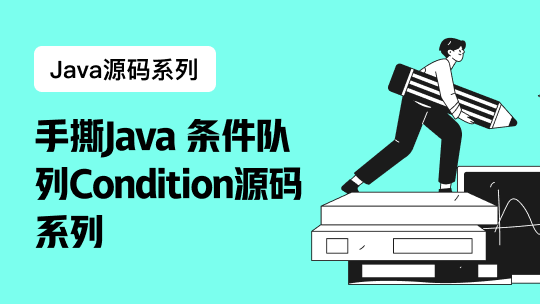group,aggregate,mapReduce
分组统计: group()
简单聚合: aggregate()
强大统计: mapReduce()
db.collection.group(document)
document:{
key:{key1:1,key2:1}, //根据那几个字段分组
cond:{}, //筛选的条件
reduce: function(curr,result) { //分组之后的聚合运算,curr是一行数据,result是计算后的结果
},
initial:{}, //初始化result里面
finalize:function() { //reduce一组都执行完毕后最后执行的函数
}
}
#计算每个栏目下(cat_id)的商品数 count()操作
select cat_id,count(*) from goods group by cat_id; //mysql操作
use shop
db.goods.group(
{
key:{cat_id:1}, //根据哪个字段分组
cond:{}, //所有行取出来,不加条件
reduce:function(curr,result) {//reduce的执行过程:每一行就是一个curr,每一组共用一个result变量,
result.cnt += 1; //result.cnt是每组有多少行,每个组有一个result,
},
initial:{cnt:0}
}
):
[
{
"cat_id" : 4.0,
"cnt" : 3.0
},
{
"cat_id" : 8.0,
"cnt" : 3.0
},
{
"cat_id" : null,
"cnt" : 2.0
}
]
#查询每个栏目下价格高于3500元的商品数量
use shop
db.goods.group(
{
key:{cat_id:1}, //cat_id分组,并且查出car_id和shop_price字段
cond:{shop_price:{$gt:3500}},
reduce:function(curr,result) {
result.cnt += 1;
},
initial:{cnt:0}
}
):
[
{
"cat_id" : 3.0,
"shop_price" : 5999.0,
"cnt" : 1.0
},
{
"cat_id" : 5.0,
"shop_price" : 3700.0,
"cnt" : 1.0
}
]
#查询每个栏目下价格大于3000元的商品个数
{
key:{cat_id:1},
cond:{},
reduce: function(curr,result) {
result.total += 1;
},
initial:{total:0}
}:
[
{
"cat_id" : 4.0,
"total" : 3.0
},
{
"cat_id" : 8.0,
"total" : 3.0
},
{
"cat_id" : null,
"total" : 2.0
}
]
#计算每个栏目下的商品库存量 sum()操作
select sum(goods_number) from goods group by cat_id;
use shop
db.goods.group(
{
key:{cat_id:1},
cond:{},
reduce: function(curr,result) {
result.total += curr.goods_number;
},
initial:{total:0}
}
):
[
{
"cat_id" : 4.0,
"total" : 3.0
},
{
"cat_id" : 8.0,
"total" : 61.0
},
{
"cat_id" : null,
"total" : NaN
}
]
#查询每个栏目最贵的商品价格, max()操作
select max(shop_price) from goods group by cat_id;
use shop
db.goods.group(
{
key:{cat_id:1},
cond:{},
reduce:function(curr , result) {
if(curr.shop_price > result.max) {
result.max = curr.shop_price;
}
},
initial:{max:0}
}
):
#查询每个栏目下商品的平均价格
select cat_id,avg(shop_price) from goods group by cat_id;
use shop
db.goods.group(
{
key:{cat_id:1}, //相当于group by
cond:{}, //相当于where
reduce:function(curr , result) { //相当于sum.avg函数
result.cnt += 1;
result.sum += curr.shop_price;
},
initial:{sum:0,cnt:0}, //进这个组执行一下
finalize:function(result) { //出这个组执行一下, 组操作完毕后的回调函数
result.avg = result.sum/result.cnt;
}
}
):
[
{
"cat_id" : 4.0,
"sum" : 6891.0,
"cnt" : 3.0,
"avg" : 2297.0
},
{
"cat_id" : 8.0,
"sum" : 226.0,
"cnt" : 3.0,
"avg" : 75.3333333333333
},
{
"cat_id" : null,
"sum" : NaN,
"cnt" : 2.0,
"avg" : NaN
}
]
注意:
1:group需要我们手写聚合函数的业务逻辑
2:group 不支持集群shard cluster, 无法分布式运算
3:分布式可以用 aggregate() (version2.2) ,
或者mapReduce() (version2.4)
GROUP BY $group
HAVING $match
SELECT $project
ORDER BY $sort
LIMIT $limit
SUM() $sum
COUNT() $sum
#查询每个栏目下的商品数量
select count(*) from goods group by cat_id;
db.goods.aggregate(
[
{
$group:{
_id:"$cat_id", //根据cad_id分组
total:{$sum:1} //乘以1
}
}
]
):
{
"_id" : null,
"total" : -2.0
}
{
"_id" : 14.0,
"total" : -2.0
}
{
"_id" : 2.0,
"total" : -1.0
}
{
"_id" : 13.0,
"total" : -2.0
}
#查询goods下有多少条商品,select count(*) from goods
[
{$group:{_id:null,total:{$sum:1}}}
];
{
"_id" : null,
"total" : 33.0
}
#查询每个栏目下 价格大于3000元的商品个数
use shop
db.goods.aggregate(
[
{$match:{shop_price:{$gt:3000}}},
{$group:{_id:"$cat_id",total:{$sum:1}}}
]
):
{
"_id" : 5.0,
"total" : 1.0
}
{
"_id" : 3.0,
"total" : 2.0
}
#查询每个栏目下 价格大于50元的商品个数
#并筛选出"满足条件的商品个数" 大于等于3的栏目
select cat_id,count(*) as cnt from goods where shop_price>3000 group by cat_id having cnt>=2
use shop
db.goods.aggregate(
[
{$match:{shop_price:{$gt:3000}}}, //放在group之前是where
{$group:{_id:"$cat_id",total:{$sum:1}}},
{$match:{total:{$gte:2}}} //放在group之后是having
]
):
{
"_id" : 3.0,
"total" : 2.0
}
#查询每个栏目下的库存量
use shop
db.goods.aggregate(
[
{$group:{_id:"$cat_id" , total:{$sum:"$goods_number"}}}, //cat_id分组,goods_number求和,
]
):
{
"_id" : 5.0,
"total" : 8.0
}
{
"_id" : 15.0,
"total" : 2.0
}
#查询每个栏目下的库存量,并按库存量排序
use shop
db.goods.aggregate(
[
{$group:{_id:"$cat_id" , total:{$sum:"$goods_number"}}},
{$sort:{total:1}} //1是升序
]
)
#查询每个栏目下的库存量,并按库存量排序
use shop
db.goods.aggregate(
[
{$group:{_id:"$cat_id" , total:{$sum:"$goods_number"}}},
{$sort:{total:1}},
{$limit:3} //取前3个
]
):
{
"_id" : null,
"total" : 0
}
{
"_id" : 2.0,
"total" : 0.0
}
{
"_id" : 15.0,
"total" : 2.0
}
#查询每个栏目的商品平均价格,并按平均价格由高到低排序
select cat_id ,avg(shop_price) as pj from goods group by cat_id order by pj desc limit 3
use shop
db.goods.aggregate(
[
{$group:{_id:"$cat_id" , avg:{$avg:"$shop_price"}}}, //car_id排序,shop_price求平均,
{$sort:{avg:-1}},
{$limit:3}
]
):
{
"_id" : 5.0,
"avg" : 3700.0
}
{
"_id" : 4.0,
"avg" : 2297.0
}
{
"_id" : 3.0,
"avg" : 1746.06666666667
}
mapReduce 随着"大数据"概念而流行,mapReduce的真正强项在于分布式。
其实mapReduce的概念非常简单,比aggregate要简单,从功能上说,相当于RDBMS(传统数据库)的 group 操作。
当数据非常大时,像google,有N多数据中心,数据都不在地球的一端,用group力所不及.group既然不支持分布式, 由于单台服务器的运算能力必然是有限的.
而mapRecuce支持分布式(不是算法好),而是支持大量的服务器同时工作,用蛮力来统计.mapRecuce就是group和aggregate,只不过支持分布式。
mapRecuce的工作过程:1.map-->映射,2.reduce->归约
map: 1.先在全世界机器找(分布式集群上找),把属于同一个组的数据,映射到一个数组上.cat_id [23,2,6,7],2.reduce: 把数组(同一组)的数据,进行运算.
#用mapReduce计算每个栏目的库存总量
//map函数(进行映射工作,映射成一个二维数组)
var map = function() {
emit(this.cat_id,this.goods_number); //根据cat_id分组,
}
/*
{
cat_id1:[goods_number1,goods_number2,goods_number3.....],
cat_id2:[goods_number1,goods_number2,goods_number3.....]
cat_id3:[goods_number1,goods_number2,goods_number3.....]
}
*/
var reduce = function(cat_id,numbers) { //对数组做处理,求goods_number的和,
return Array.sum(numbers); //mongo对js的数组增加的求和方法
}
/*
{
_id:cat_id1, value:goods_number1+goods_number2+goods_number3.....,
_id:cat_id1, value:goods_number1+goods_number2+goods_number3.....,
_id:cat_id1, value:goods_number1+goods_number2+goods_number3.....,
}
*/
db.goods.mapReduce(map,reduce,{out:'res'}); //out计算的结果放在res集合里面去,
//多了一个res表
show tables
db.res.find():
{
"_id" : null,
"value" : NaN
}
{
"_id" : 2.0,
"value" : 0.0
}
{
"_id" : 3.0,
"value" : 203.0
}
{
"_id" : 4.0,
"value" : 3.0
}
{
"_id" : 15.0,
"value" : 2.0
}
//查看array的所有方法:
for (var k in Array){
print(k)
}:
contains
unique
shuffle
tojson
fetchRefs
sum
avg
stdDev
#用mapReduce计算每个栏目下商品的平均价格
var map = function() {
emit(this.cat_id,this.shop_price);
}
var reduce = function(cat_id,values) {
return Array.avg(values);
}
db.goods.mapReduce(map,reduce,{out:'res'});
:
{
"_id" : null,
"value" : NaN
}
{
"_id" : 2.0,
"value" : 823.33
}
{
"_id" : 3.0,
"value" : 1746.06666666667
}
var map = function() {
if(this.jing < 0 || this.wei < 0){
return;
}
var j = Math.floor(this.jing/5)*5;
var w = Math.floor(this.wei/5)*5;
var block = j+":"+w;
emit(block,1);
}
var reduce = function(block,values) {
return Array.sum(values);
}
db.goods.mapReduce(map,reduce,{out:'res'});
mongo14
点赞
收藏













